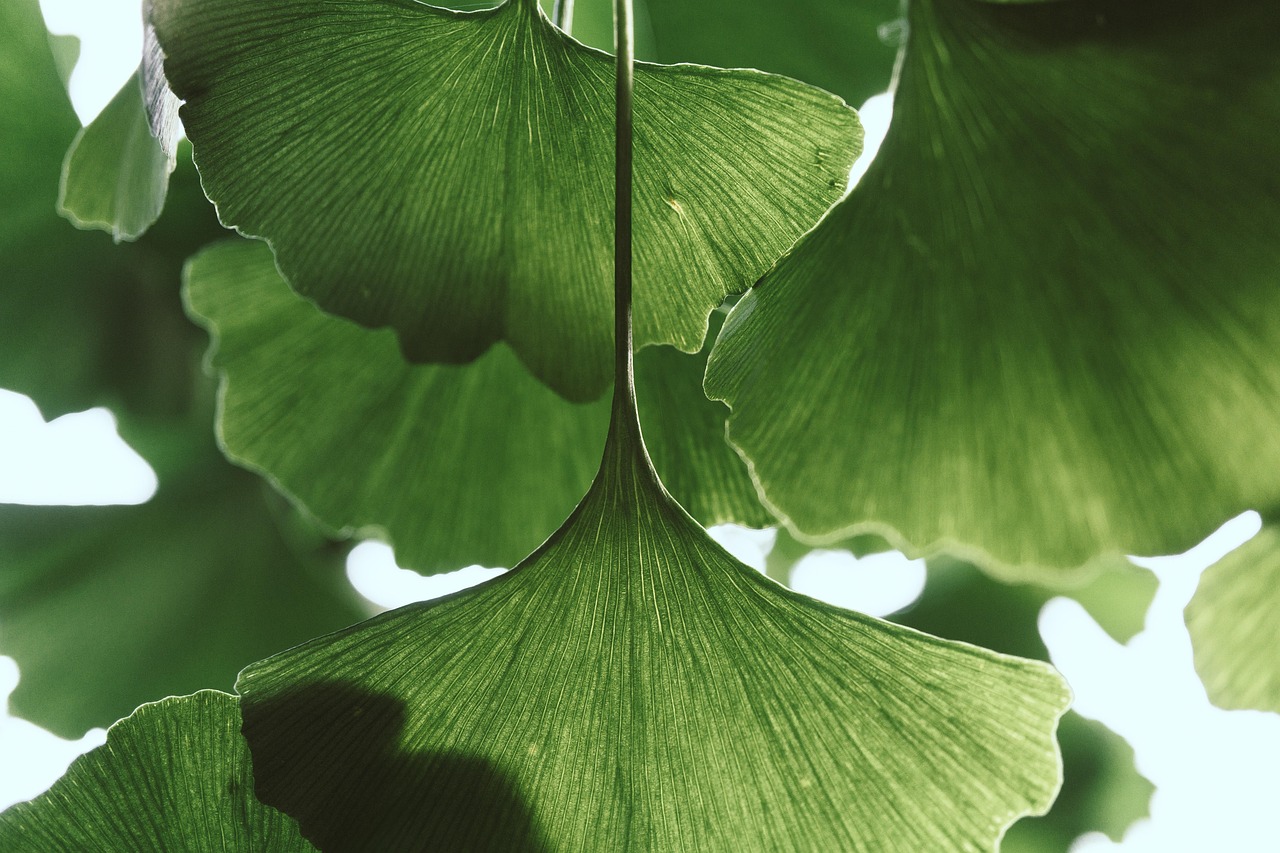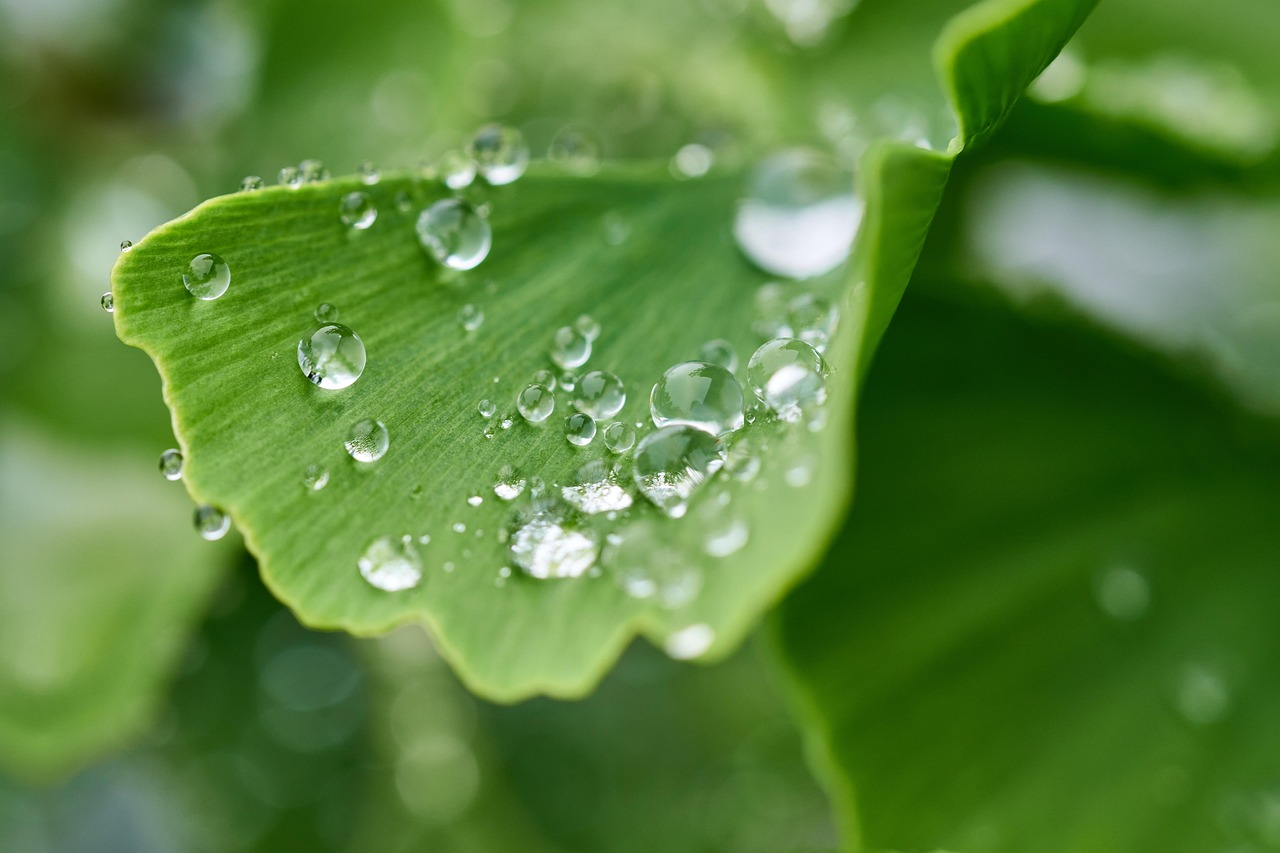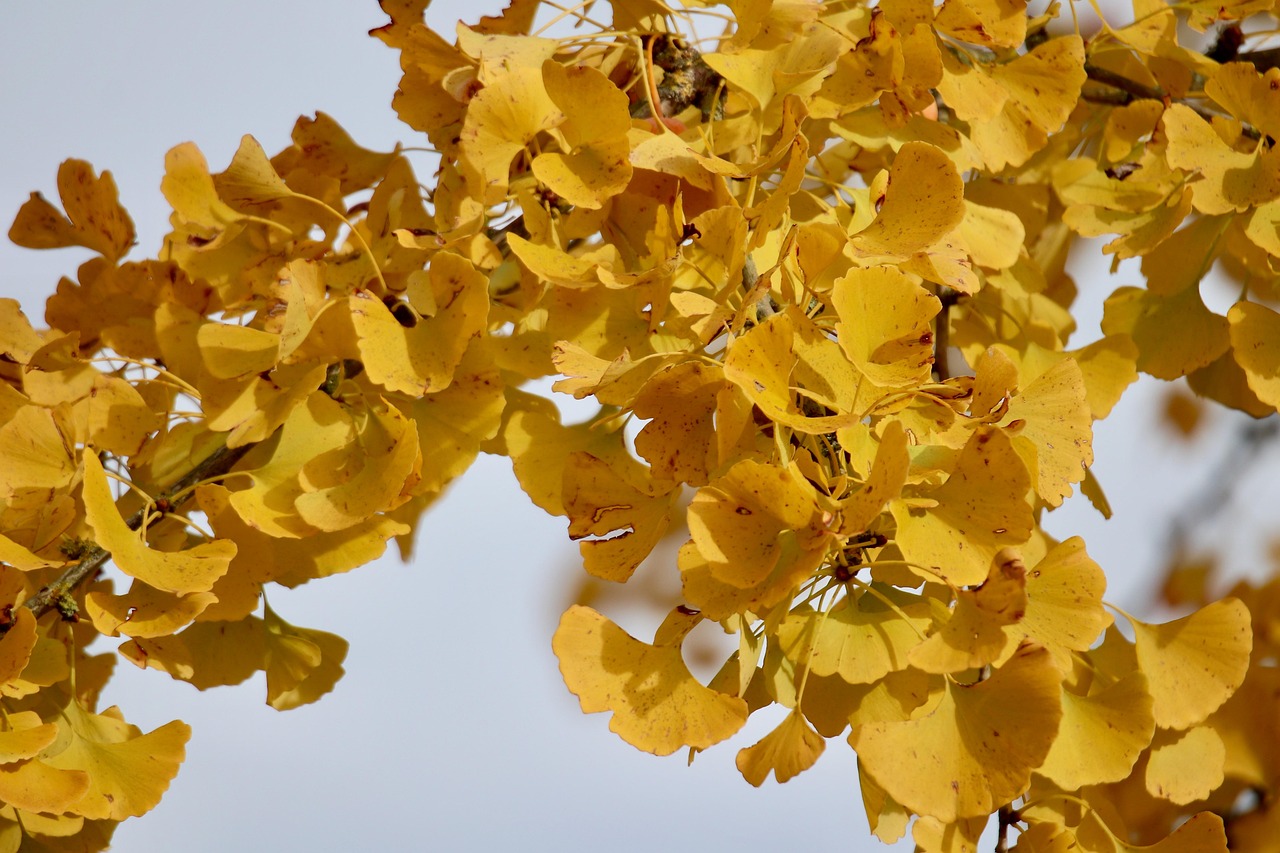The Ginkgo tree, known for its unique fan-shaped leaves, typically grows at a moderate rate of 12 to 24 inches per year. Its distinctive leaves provide not only aesthetic value but also historical significance, as the species has existed for millions of years.
The Ginkgo biloba, often referred to as the maidenhair tree, is one of the oldest living tree species on Earth. This tree has remained largely unchanged for over 200 million years. Its resilience and adaptability make it a popular choice for urban landscaping. Ginkgo trees are known for their unique leaves, which turn a brilliant yellow in the fall. These leaves are fan-shaped and have a distinctive vein structure that sets them apart from other tree species.

In addition to their striking appearance, Ginkgo trees have several benefits. They are tolerant of pollution and can thrive in a variety of soil conditions. This makes them an excellent choice for city environments where air quality may be compromised. Furthermore, Ginkgo trees are resistant to pests and diseases, contributing to their longevity and popularity.
Growth Rate of the Ginkgo Tree
The growth rate of a Ginkgo tree can vary based on several factors including soil quality, climate, and care. Generally, young Ginkgo trees grow at a rate of about 12 to 24 inches per year. As they mature, their growth may slow down slightly, but they can eventually reach heights of 50 to 80 feet.
Below are some key factors that influence the growth rate of Ginkgo trees:

- Soil Quality: Ginkgo trees thrive in well-drained soil rich in organic matter. Poor soil can hinder growth.
- Watering: Regular watering during dry periods supports healthy growth, especially in young trees.
- Sunlight: Ginkgo trees prefer full sun but can tolerate partial shade. Adequate sunlight promotes faster growth.
- Fertilization: Proper fertilization can enhance growth, particularly during the early years.
As Ginkgo trees mature, they develop a more extensive root system. This allows them to access nutrients and water more efficiently, further enhancing their growth potential. The combination of their moderate growth rate and unique adaptations makes them a valuable addition to any landscape.
Unique Leaf Characteristics
The leaves of the Ginkgo tree are one of its most striking features. Their fan-shaped appearance is both distinctive and beautiful. Each leaf has a unique dichotomous venation pattern, meaning that the veins split into two as they radiate from the base. This characteristic is rare among trees and adds to the allure of the Ginkgo.
In terms of color, Ginkgo leaves start as a vibrant green in spring and summer. When autumn arrives, they transform into a brilliant yellow before falling. This seasonal change is a highlight for many gardeners and nature enthusiasts alike.

Ginkgo leaves are also notable for their medicinal properties. Extracts from the leaves have been used in traditional medicine for centuries. They are said to improve circulation and cognitive function, and they are often included in supplements aimed at boosting brain health.
| Leaf Characteristic | Description |
|---|---|
| Shape | Fan-shaped with a unique split |
| Color | Green in summer; bright yellow in fall |
| Vein Structure | Dichotomous venation pattern |
| Medicinal Uses | Improves circulation and cognitive function |
These unique leaf characteristics not only contribute to the aesthetic appeal of the Ginkgo tree but also play a role in its ecological contributions. As a living fossil, the Ginkgo tree connects us with the planet’s distant past while offering numerous benefits today.
Understanding the growth rate and unique leaf characteristics of the Ginkgo tree can help gardeners and landscape designers appreciate its value. This ancient tree species continues to captivate people around the world with its beauty and resilience.
Environmental Adaptability of Ginkgo Trees
The Ginkgo tree is renowned for its exceptional adaptability to various environmental conditions. This resilience allows it to thrive in urban settings as well as more natural landscapes. Understanding the factors that contribute to its adaptability can help gardeners and landscapers make informed decisions when planting these trees.

Soil Requirements
Ginkgo trees are not particularly picky about soil types, which is one reason for their widespread popularity. They can grow in a variety of soils, including:
- Clay
- Sandy
- Loamy
- Poorly drained soils
While they can tolerate different soil types, Ginkgo trees perform best in well-drained soils rich in organic matter. Soil pH can range from slightly acidic to alkaline, making them versatile in different environments.
Climate Tolerance
Ginkgo trees are hardy and can withstand a range of climatic conditions. They grow well in USDA hardiness zones 3 to 8, which encompasses a large part of the United States. Here are some climate characteristics that support Ginkgo growth:
- Temperature: Ginkgo trees can tolerate temperatures as low as -20°F (-29°C) and as high as 100°F (38°C).
- Humidity: They thrive in moderate humidity levels, but they can also endure drier conditions.
- Pollution Resistance: Ginkgo trees are exceptionally tolerant of urban pollution, which makes them ideal for city planting.
Ginkgo Tree Lifespan and Longevity
One of the most remarkable features of the Ginkgo tree is its impressive lifespan. Ginkgo trees can live for over a thousand years under optimal conditions. Their longevity contributes to their status as living fossils.
The extended lifespan of Ginkgo trees can be attributed to several factors:
- Disease Resistance: Ginkgo trees are resistant to many common pests and diseases, allowing them to survive longer than other species.
- Root System: Their deep and extensive root system enables them to access water and nutrients more efficiently, supporting long-term health.
- Growth Habits: Ginkgo trees have a slow maturation process, which often leads to sturdier and more resilient specimens.
Significance in Urban Landscapes
The adaptability of Ginkgo trees makes them an excellent choice for urban landscapes. They are often planted in parks, along streets, and in residential areas. Their unique characteristics provide several benefits in city environments:
- Aesthetic Appeal: The striking fall color of Ginkgo leaves adds beauty to urban spaces.
- Shade Provision: Ginkgo trees offer ample shade, making outdoor spaces more enjoyable during hot weather.
- Air Quality Improvement: Their ability to filter pollutants contributes positively to urban air quality.
Cultural and Historical Significance
The Ginkgo tree has a rich cultural and historical background. It holds significance in various cultures around the world due to its longevity and unique features.
Symbolism in Different Cultures
In several cultures, the Ginkgo tree symbolizes resilience and endurance. Its ability to withstand harsh conditions is often seen as a metaphor for strength and perseverance. Here are some cultural associations:
- Asian Cultures: In countries like Japan and China, the Ginkgo is revered as a symbol of hope and peace. It is often planted near temples and shrines.
- Western Cultures: In Europe and North America, the Ginkgo’s unique appearance has made it a popular ornamental tree in parks and gardens.
Historical Use
The historical use of Ginkgo extends beyond its ornamental value. Its leaves have been utilized in traditional medicine for centuries. They are often extracted for their beneficial properties, such as:
- Cognitive Enhancement: Ginkgo leaf extracts are believed to improve memory and cognitive function.
- Circulation Improvement: The extracts are used to enhance blood circulation, making them popular in herbal remedies.
This combination of cultural significance and practical benefits underscores the Ginkgo tree’s unique place in both nature and human history.
Propagation and Care of Ginkgo Trees
Successfully growing a Ginkgo tree requires understanding its propagation methods and care needs. Whether starting from seeds or nursery stock, proper attention will ensure a healthy tree that can thrive for centuries.
Propagation Methods
Ginkgo trees can be propagated through several methods, with the most common being seed propagation and vegetative propagation. Each method has its advantages and challenges.
Seed Propagation
Growing Ginkgo trees from seeds is a natural method that requires patience. Here are the steps to follow:
- Harvesting Seeds: Collect seeds in the fall after they have fallen from the tree. The seeds are encased in a fleshy outer layer that should be removed.
- Stratification: To improve germination rates, seeds should undergo a cold stratification process. Place them in a moist medium and refrigerate for 60-90 days.
- Planting: After stratification, plant seeds in well-drained soil, about 1 inch deep. Ensure they receive adequate sunlight.
- Watering: Keep the soil consistently moist but not waterlogged. Germination will typically occur within 30 days.
Vegetative Propagation
This method involves taking cuttings from an existing Ginkgo tree. Here are the steps:
- Selecting Cuttings: Choose healthy, semi-hardwood cuttings from the current year’s growth in late summer.
- Preparing Cuttings: Cut the stem just below a node and remove any excess leaves. Use rooting hormone to promote root development.
- Planting: Insert cuttings into a pot filled with a well-draining potting mix. Water them gently and cover with a plastic bag to retain humidity.
- Transplanting: Once roots develop, typically within 4-8 weeks, transplant the cuttings into larger containers or directly into the ground.
Care Requirements
Caring for Ginkgo trees involves regular maintenance practices that support their health and growth. Here are important care aspects to consider:
Watering
Young Ginkgo trees require consistent watering to establish their root systems. However, mature trees are quite drought-tolerant. Guidelines include:
- Frequency: Water young trees weekly during dry spells. Mature trees generally need less frequent watering.
- Method: Water deeply to encourage deep root growth, rather than shallow, frequent watering.
Fertilization
Fertilizing Ginkgo trees can enhance their growth, especially in poor soil conditions. Recommendations include:
- Timing: Apply fertilizer in early spring before new growth begins.
- Type: Use a balanced fertilizer with equal parts nitrogen, phosphorus, and potassium (N-P-K) to support overall health.
Pest and Disease Management
While Ginkgo trees are relatively pest-resistant, they can still experience issues. Regular inspection is key to early detection:
- Pests: Common pests include aphids and scale insects. Use insecticidal soap or organic pesticides if infestations occur.
- Diseases: Ginkgo trees may be susceptible to root rot if overwatered. Ensure proper drainage to prevent this issue.
Cultural Practices and Landscape Design
The Ginkgo tree’s aesthetic appeal and adaptability make it a popular choice in landscape design. Understanding its cultural practices can enhance its integration into various environments.
Landscaping Uses
Ginkgo trees serve multiple purposes in landscaping due to their size, shape, and seasonal color changes. Some common uses include:
- Shade Trees: Their broad canopy provides excellent shade for parks and gardens.
- Specimen Trees: Their unique shape and vibrant fall color make them standout focal points in any landscape.
- Street Trees: Their tolerance for urban pollution makes them ideal for lining streets or sidewalks.
Cultural Significance in Landscaping
Cultivating Ginkgo trees often reflects cultural values and aesthetics. Here are some ways this significance is expressed:
- Ecosystem Benefits: Planting Ginkgo trees contributes positively to local ecosystems by providing habitats for wildlife.
- Cultural Heritage: In some cultures, planting Ginkgo trees is a way to honor traditions and connect with the past.
The integration of Ginkgo trees into various landscapes not only enhances beauty but also reinforces cultural values related to nature and sustainability.
Environmental Contributions of Ginkgo Trees
Beyond their aesthetic appeal and cultural significance, Ginkgo trees play a vital role in environmental sustainability. Understanding these contributions can help promote their planting and conservation.
Air Quality Improvement
Ginkgo trees are known for their ability to improve air quality. They absorb carbon dioxide and release oxygen, contributing to a healthier atmosphere. Specific benefits include:
- Pollutant Absorption: Ginkgo trees can filter pollutants such as sulfur dioxide and nitrogen dioxide, reducing their concentration in urban areas.
- Dust and Particulate Matter: The broad leaves of Ginkgo trees trap dust and other particulate matter, improving air quality in their immediate surroundings.
Soil Erosion Prevention
The extensive root systems of Ginkgo trees help stabilize soil and prevent erosion. This is especially important in urban environments where soil can become compacted and lose its integrity. Key points include:
- Root Structure: The deep roots of Ginkgo trees anchor the soil, reducing runoff during heavy rains.
- Soil Health: Their presence encourages biodiversity in the soil, which is essential for maintaining healthy ecosystems.
Habitat for Wildlife
Ginkgo trees provide habitats for various species, contributing to local biodiversity. Some of the ways they support wildlife include:
- Nesting Sites: Their sturdy branches offer nesting opportunities for birds and small mammals.
- Foraging Opportunities: Although Ginkgo fruits are not widely consumed by wildlife, the leaves and branches can provide food for certain insects and animals.
Economic Benefits of Ginkgo Trees
In addition to their environmental advantages, Ginkgo trees offer economic benefits that can impact communities and landscapes positively. These benefits may include:
Aesthetic Value and Tourism
The unique appearance of Ginkgo trees contributes to the beauty of parks, gardens, and streetscapes. This aesthetic value can draw tourists, providing economic boosts to local businesses. Key aspects include:
- Seasonal Attractions: The vibrant yellow foliage in autumn attracts visitors who appreciate fall colors.
- Event Hosting: Parks featuring Ginkgo trees often serve as venues for community events, enhancing local culture and economy.
Potential for Medicinal Use
The medicinal properties of Ginkgo leaves have led to a growing market for supplements and herbal remedies. This creates economic opportunities in several ways:
- Industry Growth: The demand for Ginkgo extracts in the health supplement industry contributes to economic growth.
- Research Opportunities: Ongoing studies into the health benefits of Ginkgo can lead to new products and innovations.
Final Thoughts
The Ginkgo tree is a remarkable species that combines aesthetic beauty with significant ecological and economic benefits. Its moderate growth rate, unique leaf characteristics, and adaptability to various environments make it a valuable addition to any landscape. Furthermore, Ginkgo trees contribute positively to air quality, soil health, and biodiversity while offering opportunities for economic growth through tourism and medicinal use.
Cultivating Ginkgo trees not only enhances the beauty of our surroundings but also reinforces our commitment to environmental sustainability and cultural heritage. As we continue to recognize the importance of preserving this ancient species, we can ensure that future generations will enjoy the myriad benefits that Ginkgo trees provide.
As urban areas expand and environmental challenges increase, the Ginkgo tree stands out as a symbol of resilience and adaptability. It serves as a reminder of nature’s capacity to thrive alongside human development. By incorporating Ginkgo trees into our landscapes, we invest in a greener, healthier future for our communities and the planet.
